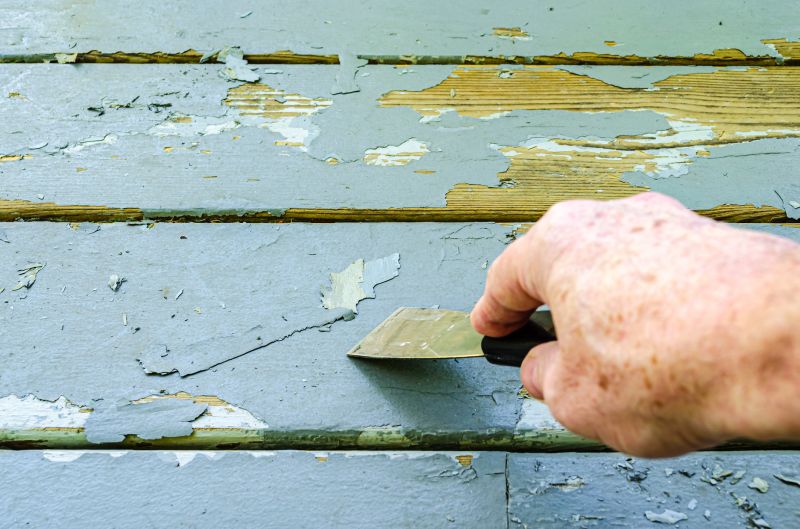Top Products For Paint Removals To Simplify Your Projects
Explore a wide range of effective paint removal tools designed to make your renovation tasks easier and more efficient.
 Removing paint from surfaces can be a challenging task that requires selecting the right tools and products to achieve effective results without damaging the underlying material. Various methods and products are available, each suited to different types of surfaces, paint layers, and project scopes. From chemical strippers to mechanical tools, understanding the options can help in choosing the most appropriate solution for your specific needs.
Removing paint from surfaces can be a challenging task that requires selecting the right tools and products to achieve effective results without damaging the underlying material. Various methods and products are available, each suited to different types of surfaces, paint layers, and project scopes. From chemical strippers to mechanical tools, understanding the options can help in choosing the most appropriate solution for your specific needs.
Top Overall Option
Chemical Paint Remover Gel
A versatile and user-friendly chemical paint remover gel can be applied to various surfaces, offering effective paint softening with minimal mess. Its thick consistency helps prevent drips and spreads evenly, making it suitable for detailed work and vertical surfaces. When used with proper safety precautions, it can simplify the paint removal process across different projects.
Types of Products For Paint Removals
Chemical Paint Remover Gel
Thick gels that soften paint for easy scraping, suitable for detailed and vertical surfaces.
Liquid Paint Stripper
Pourable liquids designed to dissolve paint layers, often used with brushes or rollers.
Paste Paint Remover
Thick pastes that adhere well to surfaces, ideal for vertical or hard-to-reach areas.
Heat Gun
Tools that soften paint with controlled heat, enabling removal with a scraper.
Manual Paint Scraper
Handheld tools designed for scraping softened or loosened paint from surfaces.
Power Sander
Electric sanders that rapidly remove paint through abrasive action, suitable for large surfaces.
Abrasive Pads
Hand or machine-held pads used for scrubbing and sanding paint off surfaces.
Oscillating Multi-Tool
Versatile power tool with various attachments for scraping and sanding paint.
Sandblasting Equipment
High-pressure abrasive blasting for removing paint from large or tough surfaces.
Chemical Paint Stripping Wraps
Reusable wraps soaked in stripping solution for covering large areas and multiple surfaces.
Infrared Paint Remover
Devices that use infrared heat to loosen paint layers with minimal surface disturbance.
Chemical Gel Removers for Vertical Surfaces
Specialized gels formulated for easy application on walls and other vertical surfaces.
Popular Choices
Widely used for its ease of application and effectiveness across various surfaces.
Commonly chosen for its straightforward application and versatility.
Favored for its ability to quickly soften paint without chemicals.
A staple tool for manual removal, especially in detailed work.
Popular for large-scale projects requiring fast paint removal.
Effective for finishing and detail work in paint removal.
Flexible and efficient for various paint removal tasks.
Chosen for heavy-duty removal on large or stubborn surfaces.
Gaining popularity for its precision and minimal surface damage.
Convenient for covering large areas with minimal mess.
Chemical paint removers are popular for their ability to soften and lift layers of paint, making manual scraping easier. These products often come in gel, liquid, or paste forms, allowing for controlled application on vertical or intricate surfaces. Mechanical options, such as sanding tools and scrapers, provide a more hands-on approach, ideal for surfaces where chemical use is not preferred or for removing stubborn layers.
Heat guns offer a different method by applying controlled heat to soften paint, enabling removal with a scraper. They are especially useful for detailed or delicate surfaces where precision is needed. Additionally, power sanders and abrasive pads can rapidly strip paint but require careful handling to avoid damage to the surface underneath.
Choosing the right product depends on several factors, including the type of surface, the amount of paint to be removed, safety considerations, and the project scope. Proper preparation and safety gear are essential regardless of the method chosen. By understanding the strengths and limitations of each product type, users can select the most suitable tools for efficient and safe paint removal.
Key Buying Considerations
- Surface compatibility: Ensure the product is suitable for the material you are working on, such as wood, metal, or drywall.
- Type of paint: Consider whether the paint is latex, oil-based, or epoxy, as some products are more effective on certain types.
- Project size: Larger projects may benefit from power tools or chemical wraps, while small jobs might only need manual tools.
- Ease of application: Some products are easier to apply and clean up than others, impacting overall convenience.
- Safety precautions: Always consider the safety instructions, including ventilation, protective gear, and handling procedures.
- Environmental considerations: Be aware of the chemical composition and any fumes or residues involved.
- Surface preservation: Choose products that minimize surface damage, especially for delicate or finished surfaces.
- Removal method: Decide whether chemical, heat, or mechanical methods are most appropriate for your project.
- Drying or curing time: Some products require longer waiting periods before surface preparation or painting.
- Cost and availability: Consider the overall cost and how readily the product can be sourced locally or online.
- Environmental safety: Check for any hazardous ingredients or disposal requirements.
- Compatibility with tools: Ensure that your existing tools can work with the chosen product or method.
- Ease of cleanup: Some products require special disposal or cleaning procedures post-application.
- User reviews and ratings: Look for feedback from other users to gauge effectiveness and ease of use.
- Manufacturer instructions: Always follow the recommended application guidelines for safety and effectiveness.
This page contains affiliate links. We may earn a commission if you make a purchase through these links, at no additional cost to you.
